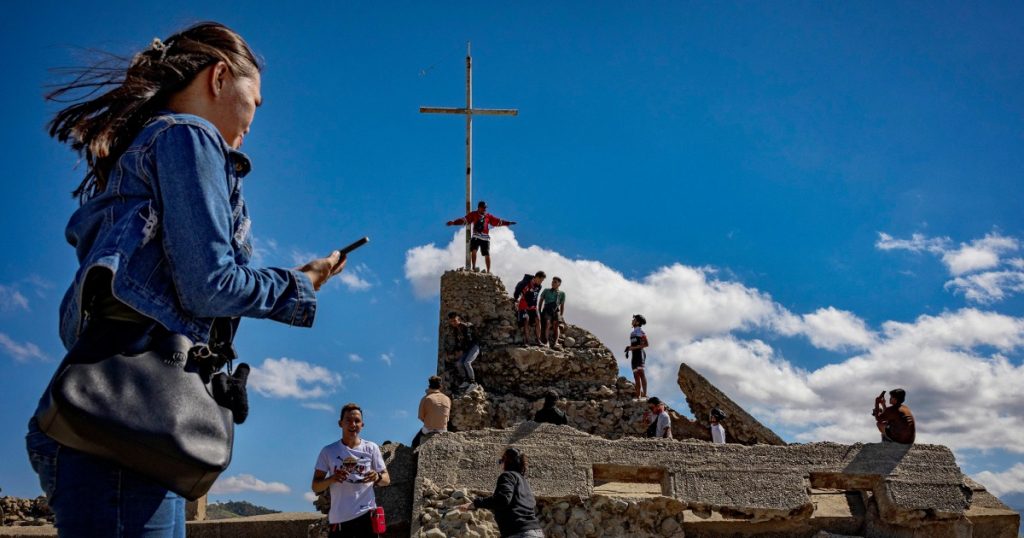The northern Philippines has been experiencing a prolonged drought, leading to low water levels in the Pantabangan Dam in Nueva Ecija province. This has resulted in the emergence of ruins from a sunken church and old structures from a centuries-old town that was relocated in the 1970s during the construction of the dam. Residents in the region, who are dependent on rice-growing, have been amazed by the rare spectacle and have found a new source of income by ferrying tourists to see the ruins.
Retired nurse Aurea Delos Santos expressed excitement about the resurfacing of the sunken church and old Pantabangan town, prompting her to visit the site. Some locals, like fisherman Nelson Dellera, have capitalized on the attraction by offering tours to tourists visiting the island where the ruins are located. Dellera has seen a significant increase in his income, from earning 200 pesos through fishing to making 1,500 to 1,800 pesos per day by catering to tourists.
The Pantabangan Dam serves as the main irrigation and water source for Nueva Ecija and nearby provinces, making it a vital resource for the region. The drought has caused water levels to drop significantly, revealing remnants of the old town that was submerged when the dam was constructed. The emergence of the ruins has drawn attention to the history of the area and has provided a unique opportunity for locals to showcase their heritage and earn additional income.
The Philippines, along with other countries in Southeast Asia, has been experiencing extreme heat due to climate change, leading to various consequences such as droughts and water shortages. In response to the heatwave, schools have suspended classes and governments have advised people to stay indoors to avoid heat stroke. The impact of the drought on the Pantabangan Dam has highlighted the vulnerability of the region to changing weather patterns and the importance of sustainable water management practices to cope with future challenges.
Overall, the emergence of the ruins at the Pantabangan Dam in Nueva Ecija has sparked interest among residents and tourists alike, offering a glimpse into the history of the area and providing an economic boost to the local community. As the region continues to face the effects of climate change and extreme weather conditions, the discovery of the sunken church and old town serves as a reminder of the need to adapt to environmental changes and preserve cultural heritage for future generations to enjoy.


